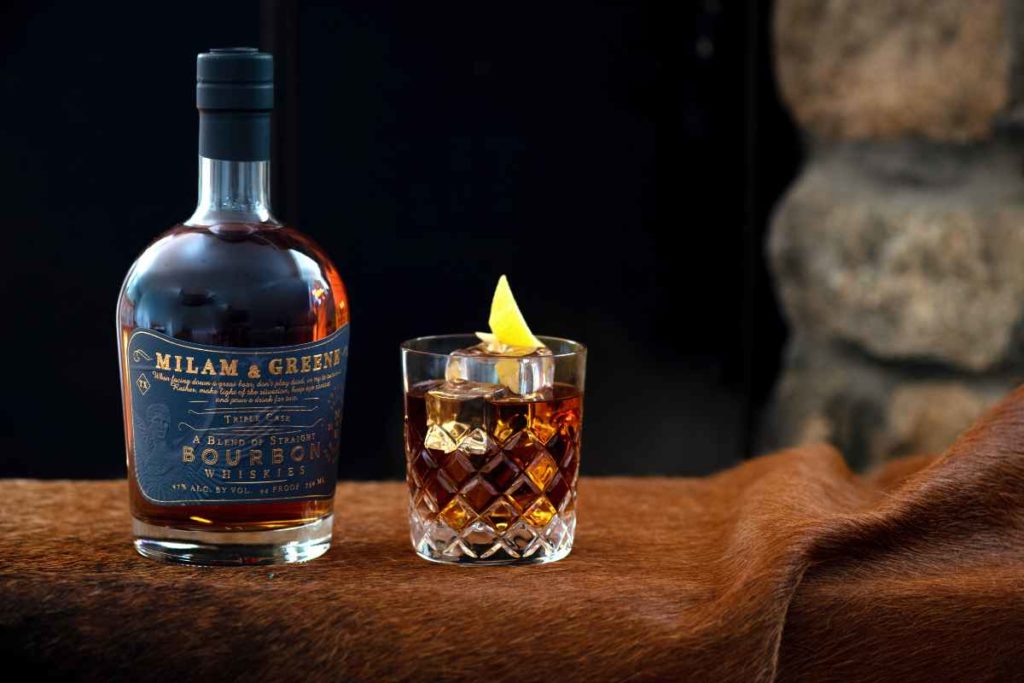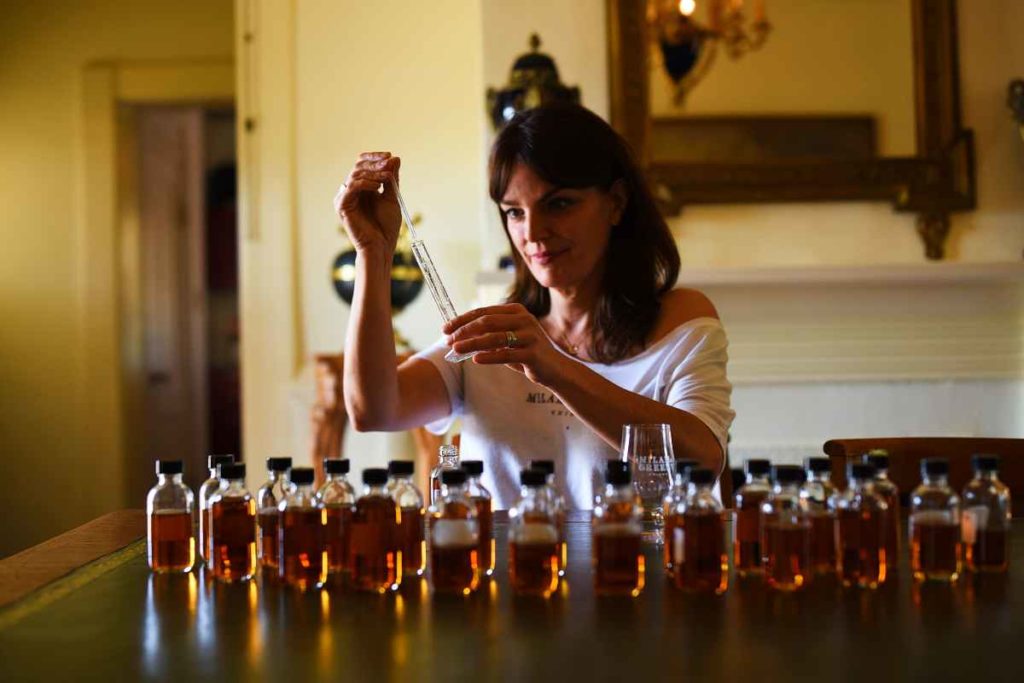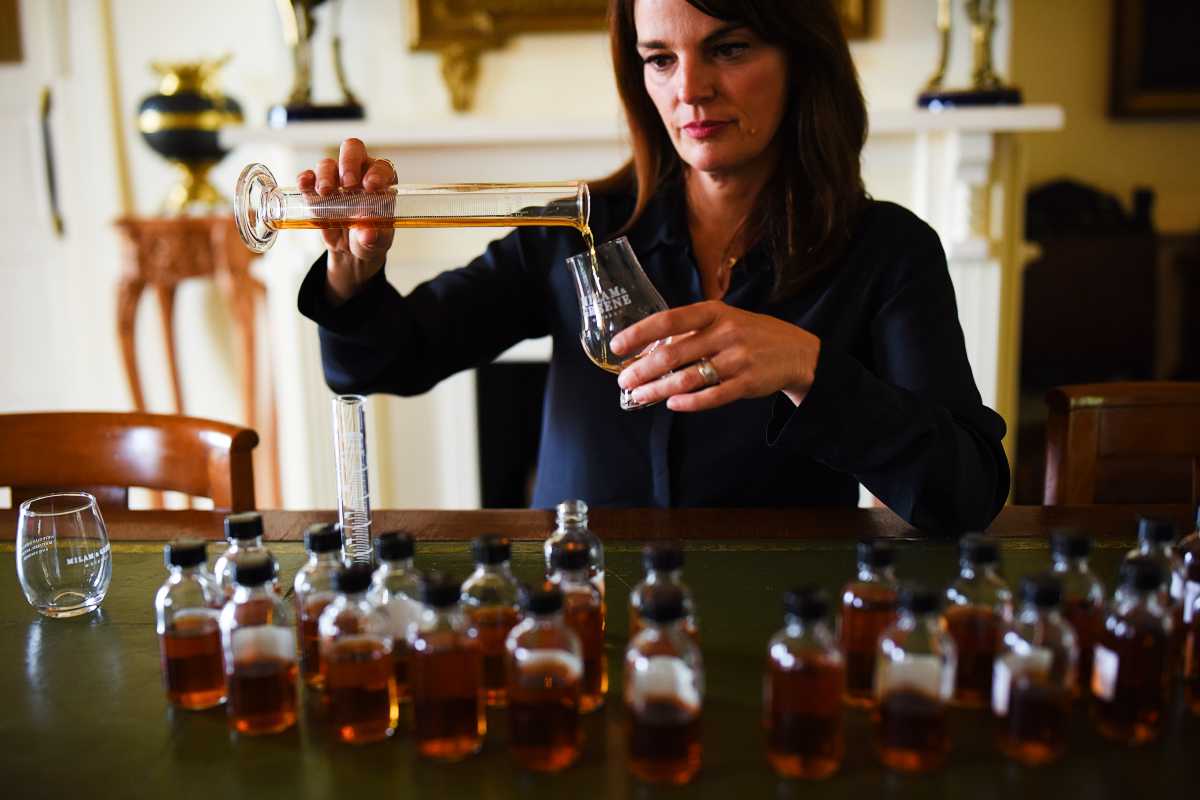Imagine that you’re browsing the whiskey aisle for something new to sip on and a bottle catches your eye. You’re feeling enticed, until you notice the wording on the label: “a blend of straight bourbon whiskeys.” You might think, “How can something that’s straight also be blended?” and “What is it blended with?”
To answer these questions and more I consulted Heather Greene, who serves as the master blender (and partial namesake) of Texas’s Milam & Greene Whiskey, which produces a Triple Cask Bourbon that happens to be labeled “a blend of straight bourbon whiskies.”
Setting the Record Straight
The first thing to understand is that the “straight” in “straight bourbon” doesn’t imply that something wasn’t blended. It simply means that the juice inside first met all the legal requirements to be called a bourbon (made in the United States, composed of at least 51% corn, distilled to no higher than 160 proof, barreled at 125 proof or below) and was then aged in new American oak barrels for a minimum of two years. Said more simply, “straight” indicates a proper bourbon aged for at least two years.
As Greene recounts, nearly every whiskey is the result of blending, whether it’s by marrying casks from the same distillery or multiple distilleries to produce the intended character and flavor profile. “To be honest, everyone’s using the technique of blending unless it’s a single barrel,” she says. “They’re just not saying it because the word is associated with something bad.”
Blending Across State Lines
However, the only way a bourbon ends up being designated “a blend of straight bourbon whiskeys” is if the straight bourbons that compose it are pulled from distilleries in different states. If this TTB rule sounds a bit arbitrary, that’s because it is.
“If I wanted to take casks from Balcones and Garrison Brothers, all from one state, that’s just straight bourbon,” says Greene, referring to other Texas-based distillers. “The minute I take a cask from Tennessee, now they want you to call it a blend of straight bourbon whiskeys.”

And that’s just what happened with Milam & Greene’s Triple Cask Bourbon. The whiskey is a blend of Milam & Greene’s own two-year-old Texas bourbon, a three-year-old Tennessee bourbon, and an 11-year-old Tennessee bourbon.
The Case for Blending
So, why go to the trouble of sourcing out of state bourbon for your product if it saddles you with a confounding label? Greene says she was initially apprehensive about how consumers might react to the terminology, but what mattered most was making good whiskey.
“I thought that at the end of the day we need to move the conversation forward,” she says. “What we’re doing is highly specialized and highly skilled. It takes a lot of blending whiskey casks to create something that is award-winning.”
As Milam & Greene’s label proudly states, each bourbon in its blend has a role to play. The two-year-old Texan adds spice, the three-year-old Tennessee supplies a rich texture, and the 11-year-old Tennessee contributes backbone. Ultimately, Greene would rather accept the label than limit potential.
“If you double-down and say, ‘This is us right here, these four walls house all of our distillation within this two-acre plot of land,’ OK, that’s great. But if you want to explore at all or you want to be really innovative, you can’t,” she says.
Not All Blends are Created Equal
Just how the word “blend” came to accrue a bad reputation is worth exploring, too. For starters, the word is not consistently used across the global whisk(e)y industry; Greene herself says she has found 38 different definitions for “blend.”

“The word ‘blend’ changes no matter where you are,” says Greene. “There is no universal definition of blend, which is really confusing and super unfortunate in a lot of ways because consumers are just massively confused.”
But in America, the word became synonymous with a category of poor-quality whiskeys that enjoyed popularity in the ‘70s and ‘80s. The makers of these bottom-shelf brown spirits, which were often used as mixers, were free to add neutral grain spirits, flavorings and additives to aged whiskey (today, the TTB defines “blended whiskey” as being at least 20% straight whiskey). While now obscure, their reign was long and terrible enough to attach scare quotes to “blend” for a generation.
“It’s unfortunate the word is shared with some of the best whiskeys in the world, and some of the crappiest whiskey,” Greene says.
A Better Blended Future
However, there are signs that drinkers may be dropping their aversion to all things blended and coming around to a term that was once shunned in the industry despite being an integral part of the whiskey-making process. Blends of straight bourbon whiskey (and rye) are produced today by High West Distilling, and 2020 saw the launch of Fistful of Bourbon, a blend of straight bourbon whiskey with five separate components.
And of course, Milam & Greene’s own Triple Cask Bourbon is itself a herald of changing times; rather than stick to the small-print “Distilled in Tennessee and Texas” as required by the TTB, the maker transparently spells out just where all of its components came from and what they add on the back of the label.
If the present is any indicator, we might be seeing a lot more blends of straight bourbon whiskeys in the future. “I think the word blend is starting to change because now I’m seeing people celebrate blends, and they would never have used that word three years ago,” Greene says.



